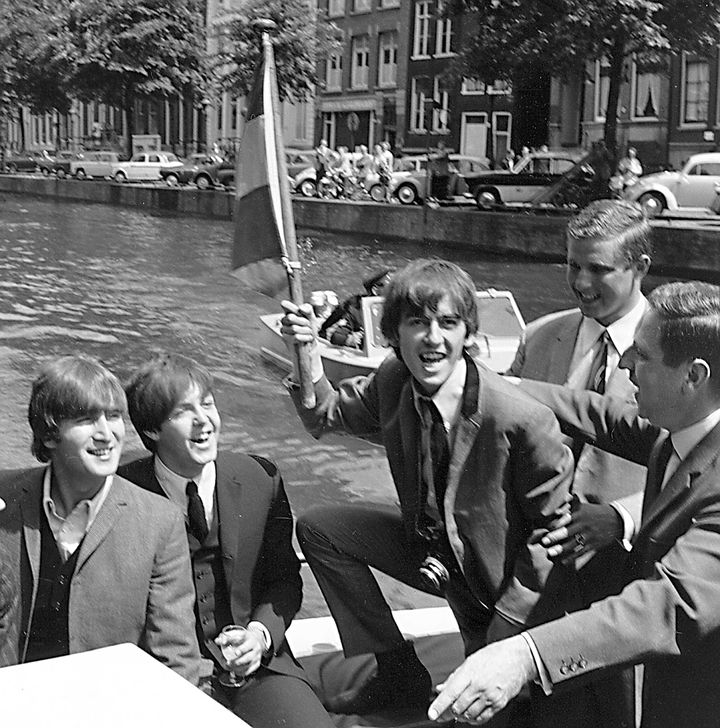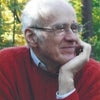
Beatles in Amsterdam
Strange, what startling contrasts a single life can include. As a Jewish adolescent, Robbert van Santen had eventually to hide out rom the Nazis, who then occupied his native Amsterdam. As an adult with contacts in the record business, he was asked by an English colleague, as a favor, to host a little-known band scheduled to play a concert in his city. Between this arrangement and the date of the visit, the band became an international sensation. It was the Beatles.
For the band’s visit to Amsterdam in the early 1960s Robbert hired a boat for a tour of the canals. The city’s papers said local people had not been so excited since the German invasion more than a couple of decades earlier. People jumped from bridges onto the boat and had to be removed by police.
Ringo was absent, his place taken by a pick-up drummer for the Dutch concert, but George, John, and Paul were in the stern of the boat with Robbert, waving and even clowning around as they criss-crossed the watery city. (Robbert is on the far right of the photo above.)
I was told about this event and given this photo after agreeing to write the story of Robbert’s adolescence. Otherwise I was immersed not in the city of the Beatles or that of of the 1990s when Robbert and I visited the Netherlands, but the dismal, dangerous, occupied city of the early 1940s. It was the city of the hiding place of Anne Frank (who had been a schoolmate of Robbert’s), of the tiny refuge where Robbert and his father escaped a police raid, and the apartment over a woodworker’s shop where Robbert’s parents hid near the Old Church and what is now the famous red light district.
The story of Robbert’s adolescence emerged as Gift of Darkness: Growing Up in Occupied Amsterdam. Unlike Anne Frank, he was free for a while to roam around the city and see what was happening, somewhat protected by his role as a young social worker to fellow Jews, a job arranged by his father.
In adolescence, Robbert was in danger of being deported to a concentration camp, as three-quarters of Jews in the Netherlands were. As an adult, he raised a family and worked selling electrical supplies as well as records. Then he emigrated to the U.S. and worked as a lecturer on the ideas of Rudolf Steiner, founder of the Waldorf schools. Robbert and I met in the San Francisco Bay Area.
A couple of decades after the original research for the book, I met the widow of the Dutch man who, in his youth, had served as leader of the resistance in Amsterdam and who, through the organization he created and the safe houses that it provided, may have saved Robbert’s life. This young resistance leader used to deal with suspicions of the occupying German soldiers by crossing the street to encounter them and by having, in his wallet, a card showing that he volunteered as a driver for German officials. Like Robbert, he could have died any day, but they didn’t.
U.S. citizens have of course died in wars, some necessary, some unwise. But since the war of independence we have never been occupied. While doing the research for Gift of Darkness, I wondered how I’d behave, I and my friends, my countrymen and women. We have led a charmed existence here in North America.
